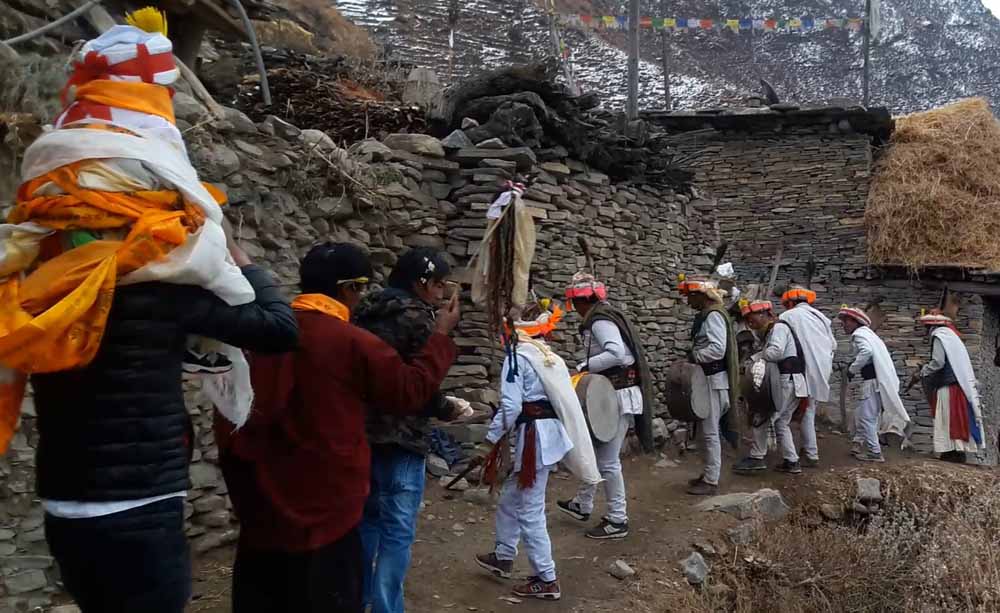Compared to West Nepal, East Nepal has shorter trekking seasons. Rainfall from the monsoon arrives early in this area in June and departs slowly starting in the first week of October. The trekking season will last longer as we travel west, while the monsoon season will be shorter. From Everest to Dhaulagiri, the Mid-East and Central regions of Nepal follow the typical trekking seasons of spring and autumn. The optimum time to visit Upper Dolpo Trekking, further to the west, is early summer because the monsoon doesn’t arrive until July, and the snow on the high passes melts slowly and so be ready for trekking in Since the clouds frequently gather in the afternoon, it’s possible that it won’t rain for the entire day. After a significant downpour, things should clear up by nightfall.
Benefits of Spring
Late Spring is favorable for treks in the Dolpo region. There is less snow and ice on the high passes above 5,000 meters due to warmer temperatures, especially later in April and into May. Despite the fact that lower elevations can be warmer.
Since Autumn is the busiest season, there are fewer other trekkers in the spring. The busiest months are October and November, with April coming in at number three. There are more flowers and greener vegetation. Moreover, you can see the villagers planting and sowing seeds in their fields. And of course, it’s time for rhododendrons to bloom.
Negative aspects of spring
Compared to Autumn, the weather is frequently more unpredictable in the spring. The Nepal Himalayas is susceptible to low-pressure systems, which can cause gloomy and rainy weather.
Towards lower elevations, temperatures throughout the day can get quite warm and muggy starting at the end of March. Up until the early summer monsoon rains, when temperatures will start to drop, it will remain scorching.
Compared to autumn, the mountain views are frequently cloudy and less clear. From Kathmandu or Pokhara, it is frequently impossible to view the Himalayan Mountains. Pollution and smoke from agricultural fires are to blame for this. The mountain views improve after you are over 3,000 meters since you are above the pollution layer.
Benefits of Autumn
Up until December, it’s typical to get frequent sunny and clear days after the monsoon season has passed. Although the Himalayas could experience post monsoon rain may occur in the October because of climate change.
The finest time for photographing is when the mountain views are at their clearest.
Negative aspects of autumn:
Sometimes post monsoon rain can bother your trips. Due to the abundance of snow, this will close mountain passes. Despite cyclones in October 2013 and 2014, they are unusual. It’s crucial to pay strict attention to weather forecasts.
At lower altitudes, the first part of October is hot and muggy. By the end of October, the weather begins to cool off, and high elevations experience cold.
The times when the monsoon leaves Nepal are unpredictable from year to year. The monsoon might last from early to mid-October in some years. Flights to mountain airstrips will experience delays and cancellations as a result of this. For instance, Limi Valley Trek and treks to Lukla for the Everest region, such as Everest Base Camp.
CONCLUSION
Since this is an adventure trip, be prepared for excitement! Always be ready for a variety of weather and environmental factors. These days, because of how unpredictable each season is, this is extremely crucial. There is no such thing as bad weather; only inappropriate attire, according to Alfred Wainwright. By consulting our kit lists, you can make sure you have the correct gear for the route you’ve chosen. The peak seasons of April, October, and November often have the best Lower Dolpo Trek weather in Nepal. The region where the walk will take place and the kind of hike will determine the exact time of year. As was mentioned, there are other considerations to take into account while deciding on the date for your Himalayan expedition.
Get to know more about us:-
Upper Dolpo Trek | Lower and Upper Dolpo Trek | Humla Trek | Upper Dolpo Upper Mustang Trek | Dolpo Jomsom Trek | Dolpo trekking route | Limi Valley Trek | Dolpo Trekking






Comments